21 stunning ceiling ideas to take your room designs up a level
Our collection of brilliant ceiling ideas will definitely get you looking up. We've got everything, from vaulted ceilings that soar to solutions for low ceilings
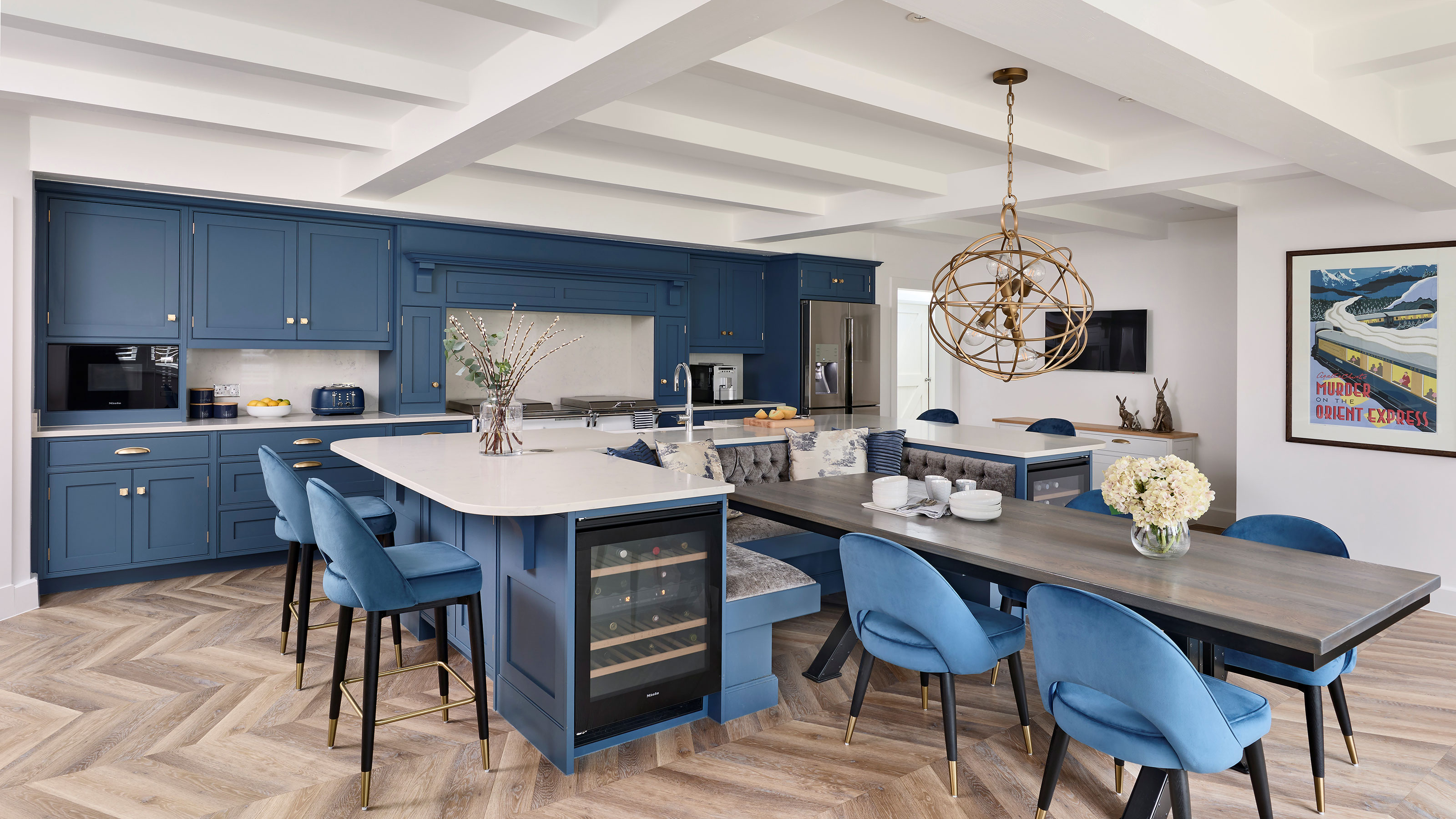
If you hadn't given much thought to your ceiling ideas then now is definitely time to start. There are a vast amount of types of ceiling to choose from and it is amazing just how much the style of this 'fifth wall' can have on both the look and the feel of a home.
There are so many different ways to treat ceilings — they certainly need not be flat, white and of a standard height and here we have set out to prove that point, by bringing you a whole host of stunning ideas. While some are solutions for houses with tricky proportions, others simply deliver a huge dose of visual interest.
Whatever your ceiling type, its height or your preferred interior style, the following round up of ideas should provide you with plenty of inspiration to turn the space above your head into a focal point to be admired.
Rethinking your ceiling ideas
When renovating, extending or self building there are a mind-boggling number of decisions to make at every stage of the project. What this means is that when it comes to certain details, it is all too easy to take the safest and simplest option rather than complicate things even more.
Ceilings and the way in which they are finished off or treated tend to fall into this category of 'play it safe decisions', meaning they often get left painted white, playing second fiddle to your choice of light fittings or wall covering ideas.
This is actually a real shame as your ceiling has the potential to become a feature in its own right. Whether you have the opportunity to create a double height or vaulted space or simply want to spruce up your existing interior scheme, we have ideas for you.
1. Bring ceiling cladding into the 21st century
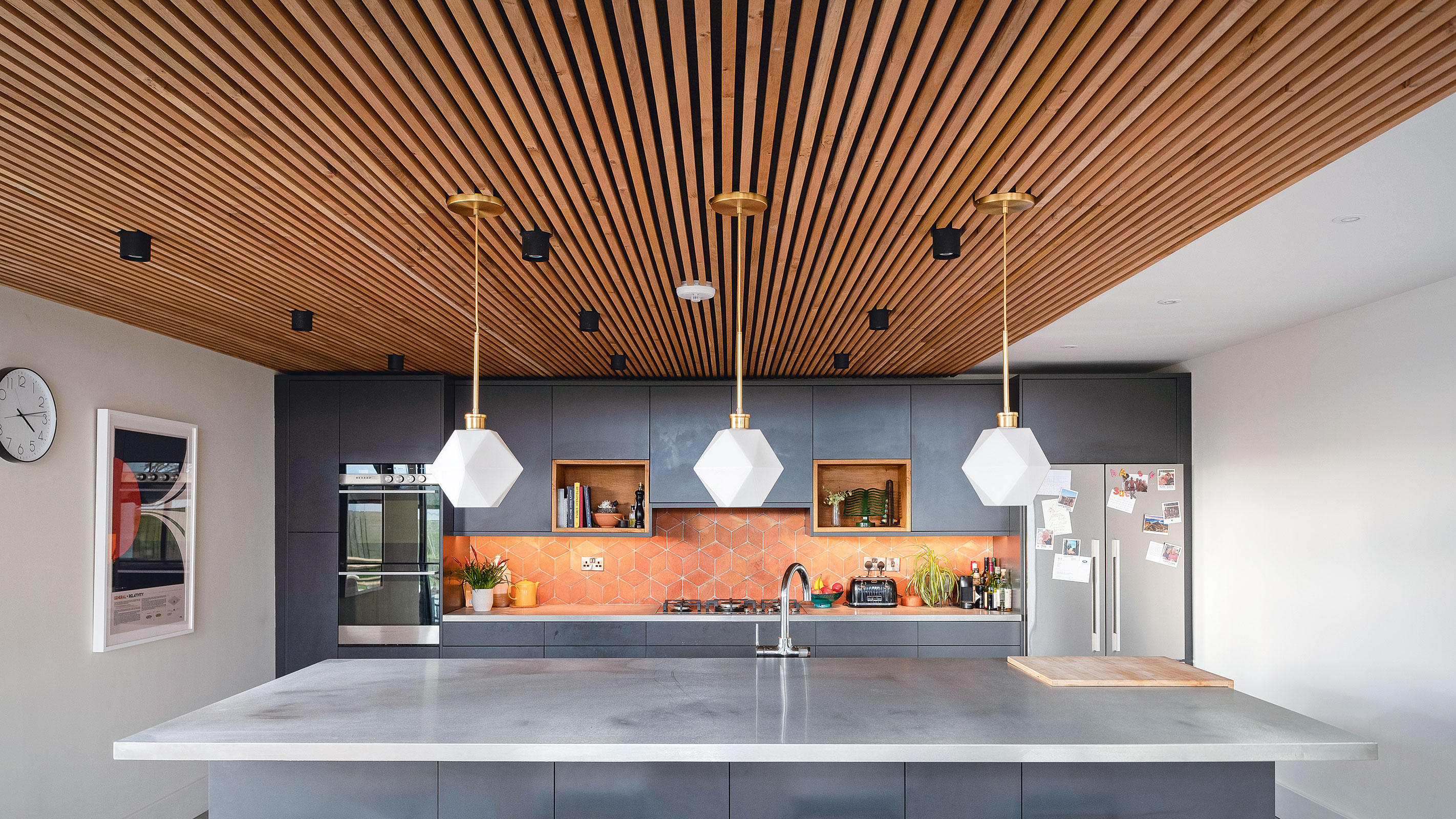
Your choice of ceiling cladding ideas will have a massive impact on the look and feel of your interiors — so do take time to consider something other than plaster painted white.
While timber-clad ceilings fell from favour after the 1970s, they have recently been enjoying a renewed popularity thanks to more sleek, contemporary designs and ways of installing them being introduced.
Timber ceiling cladding can usually be fixed directly to the ceiling, just as you would with wall cladding — if your ceiling features timber joists, then use these to secure the cladding. Alternatively, nail or screw softwood battens at right angles to the wall, spaced around 400-600mm, before attaching the cladding to these.
2. Ensure all eyes are on original beams
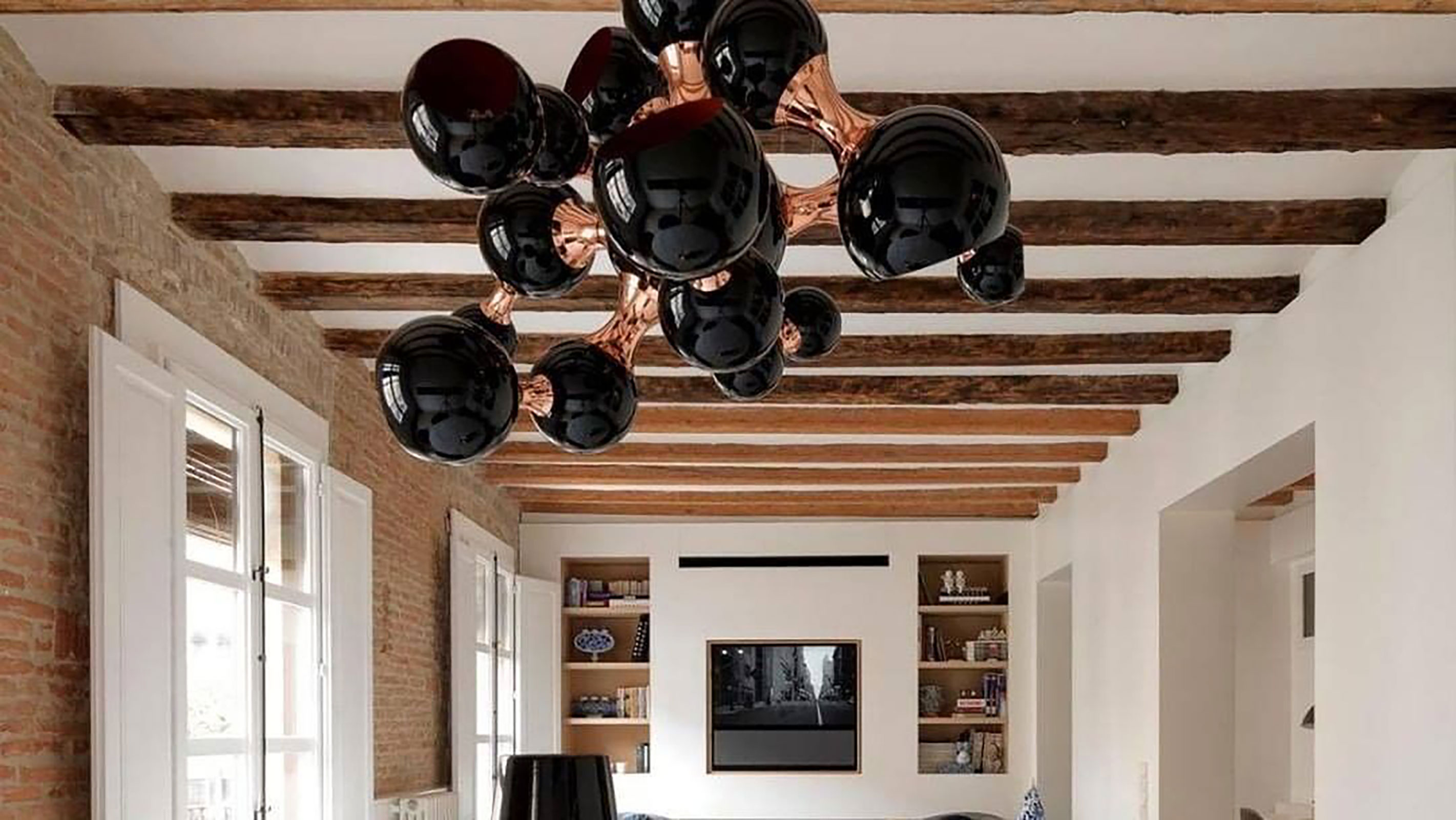
If you are lucky enough to be renovating and have original timber beams to work with then you will undoubtedly want to do all your can to ensure they are the star of the show.
While beam restoration features in many cottage renovation projects, do take time to think about how to really draw the eye to this characterful feature.
Here, rather than competing for attention with the timber beamed ceiling, the unusual striking light fitting, from DelightFULL, actually draws the eye instantly upwards, with the contrast in old and new ensuring each can be appreciated in its own right.
3. Turn your ceiling into an optical illusion
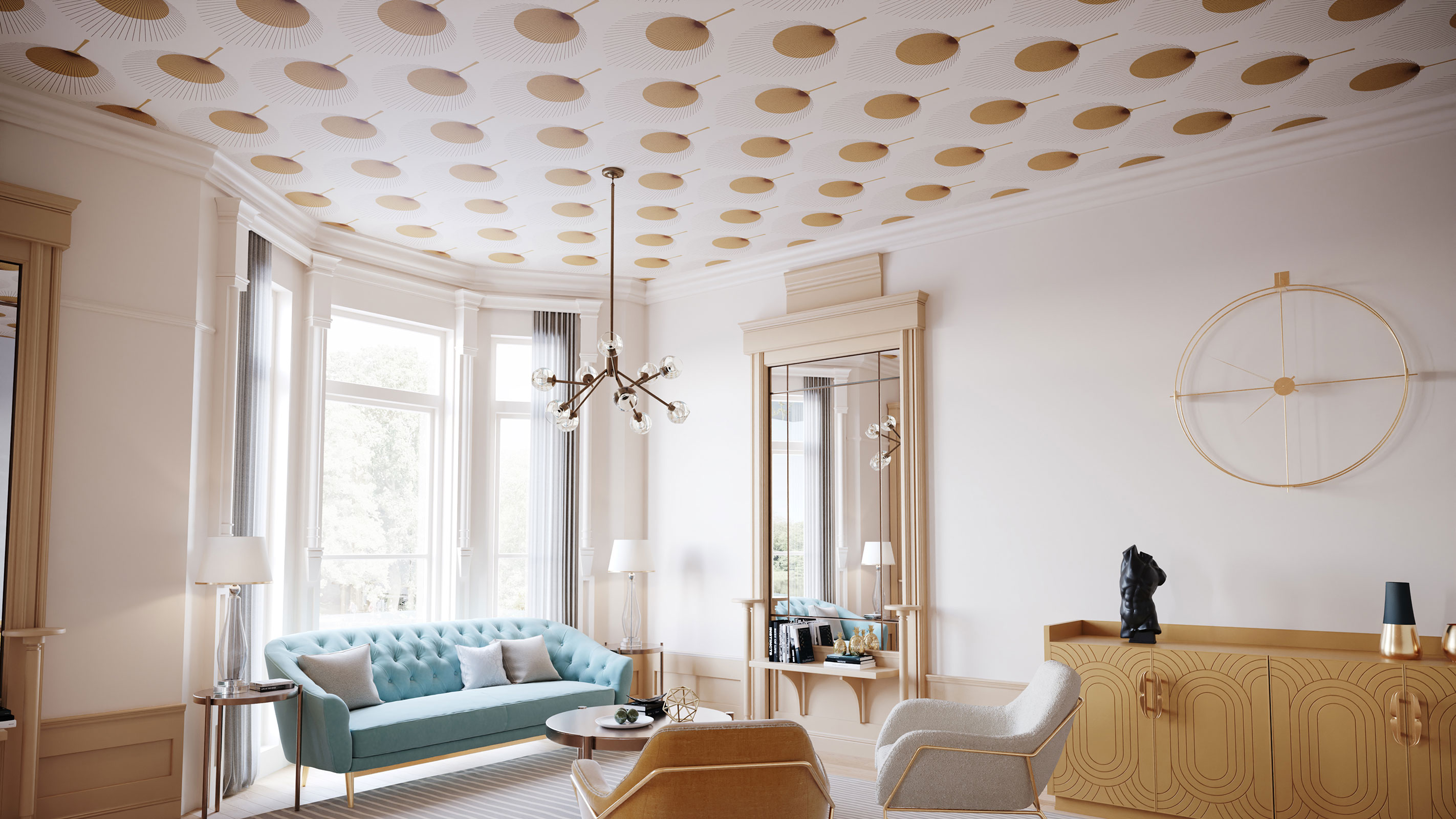
If you haven't before thought about wallpapering your ceiling then this idea may well get you thinking.
There is no reason why you can't paper a ceiling in just the same way as you would the walls. It creates instant interest and opens up the possibility for all kinds of design schemes to be created. This is also a particularly good idea for those with very high ceilings, which can sometimes, when left plain white, make a space appear vacuous.
Here, Ace Art Deco Fan Wallpaper from Bobbi Beck has been used overhead.
4. Contrast intricate moulding with modern lighting
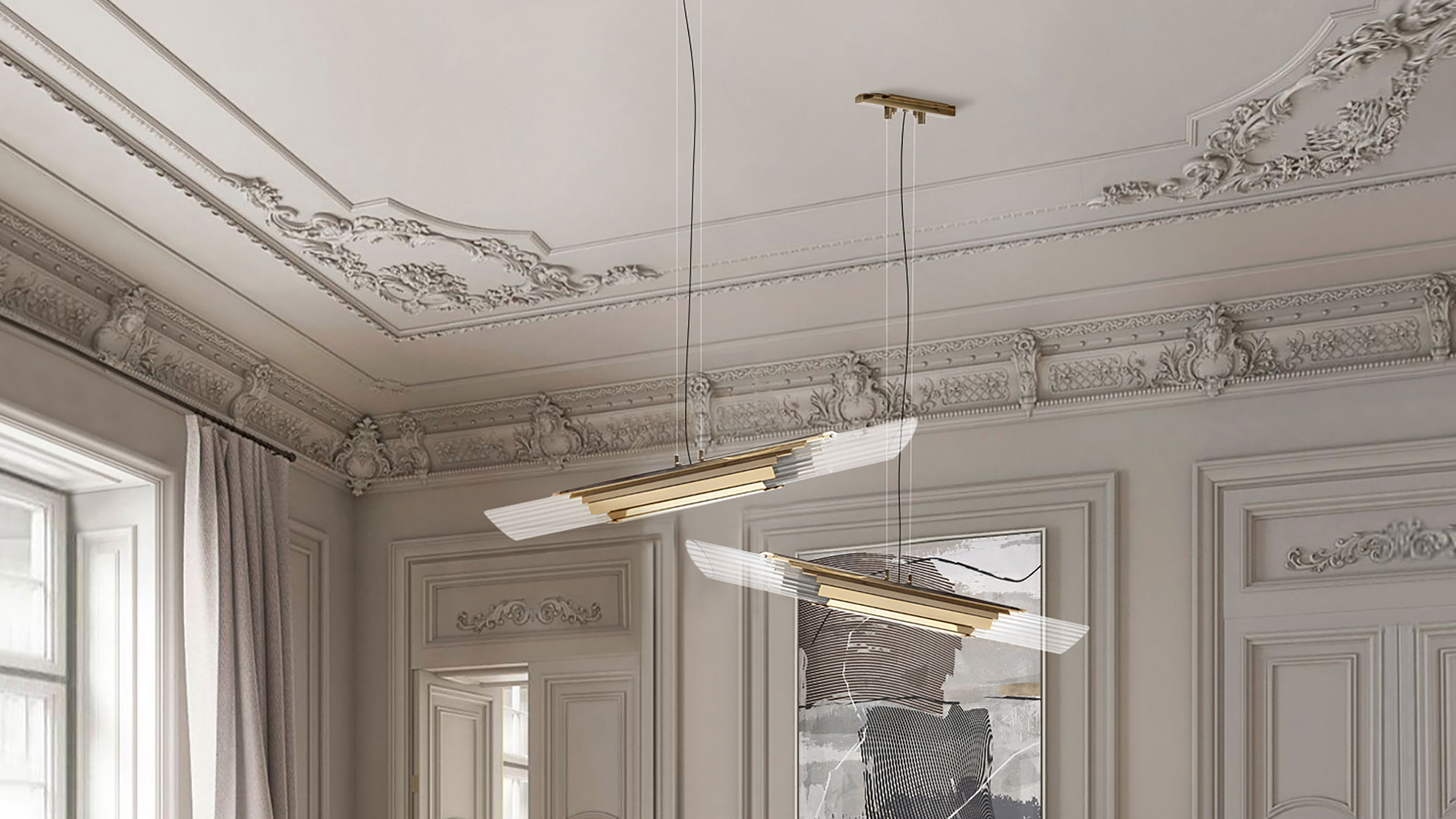
Beautiful original ceiling mouldings deserve all the attention they can get and if you have gone to the trouble of repairing old ceilings you want to make sure your efforts don't go unnoticed.
One option is to pick out intricate moulding by painting it a contrasting colour to the rest of the ceiling. Alternatively, consider pairing elaborate original mouldings with striking contemporary light fittings. The effect will be to ensure the mouldings stand out proudly as an authentic period feature while the lights show the evolution of the space.
5. Use a matching concrete finish on walls and ceiling
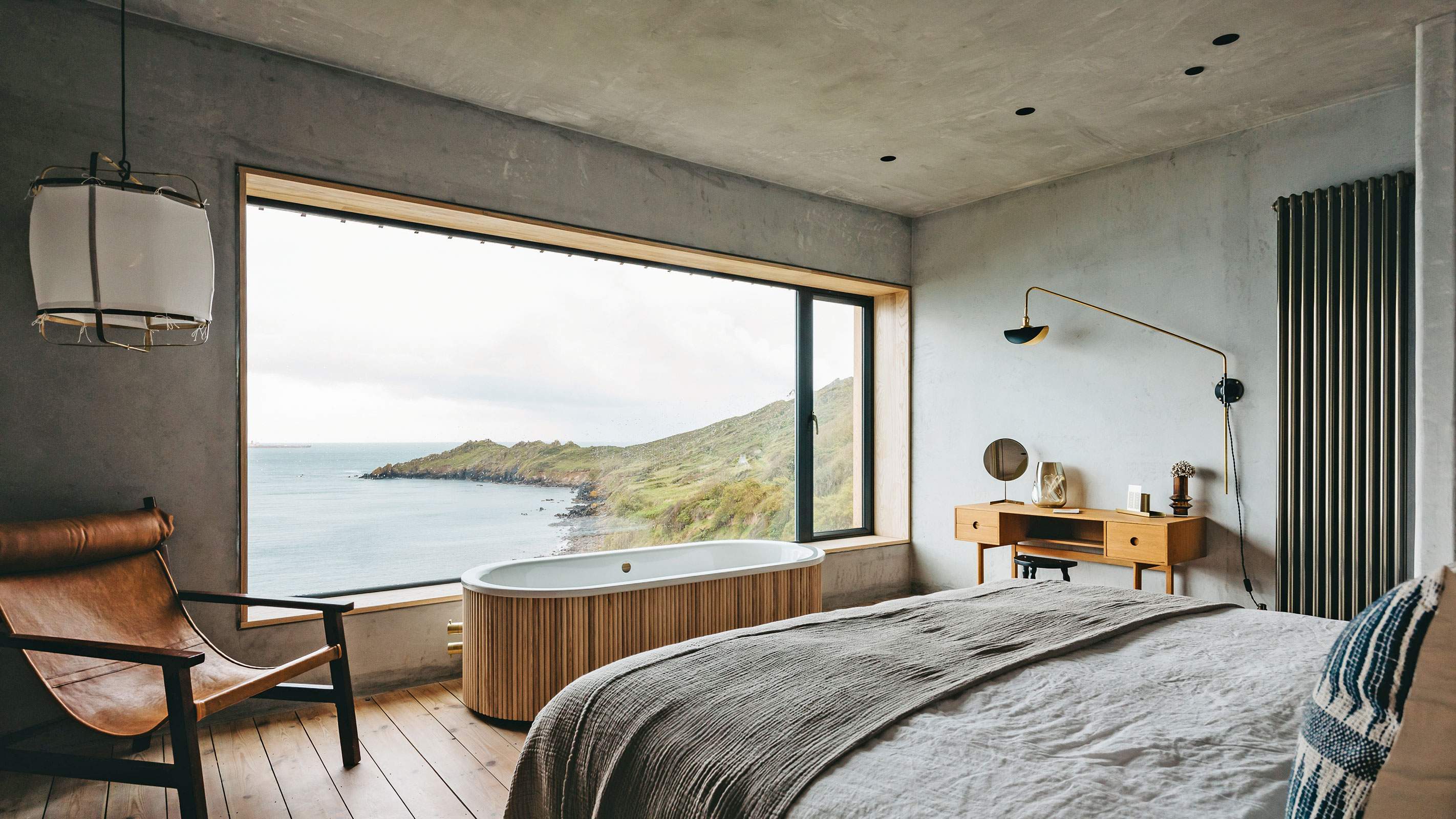
If you are after a little bit of industrial chic in your home then you can't go far wrong with concrete finishes and interesting types of plaster. This is not a look that needs to look sterile or cold thanks to the array of soft, powdery pale tones now available.
In this 1960s remodelling project, the owners have opted for a matching grey, concrete-effect wall and ceiling plaster from Clayworks. The neutral and unfussy finish of the plaster allows the stunning views enjoyed by the house to be fully appreciated.
6. Use a combination of ceiling heights
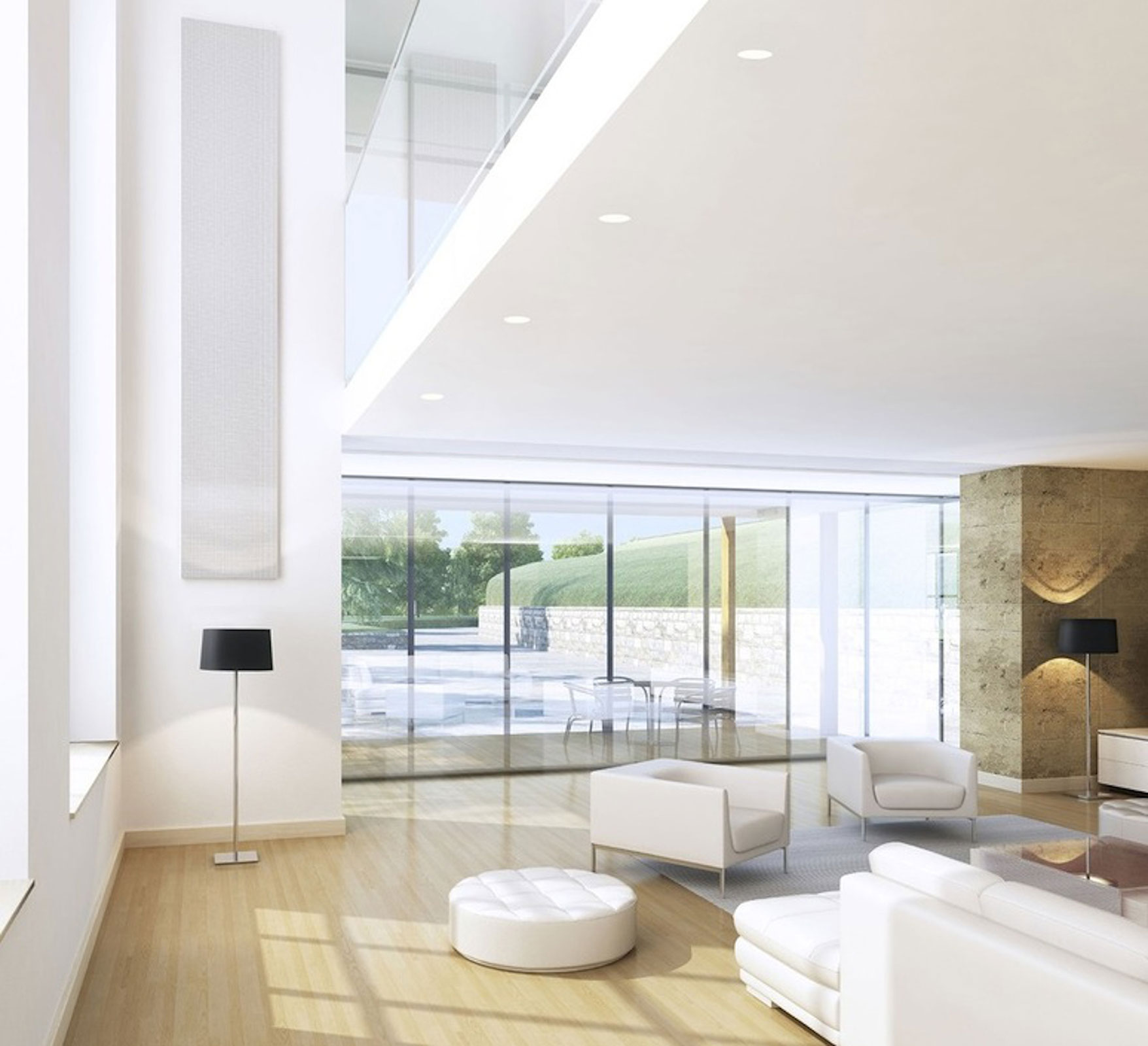
Do remember that ceilings do not have to be the same height throughout a house — they can even vary in their measurements within the same room. Not only is varying ceiling height a fantastic way to zone and break up an open plan layout, but it can also be useful in bringing in extra natural light or when navigating existing floor-to-ceiling windows or doors in the case of barn or church conversions.
The fresh, simple interiors of this contemporary home allow the striking interior architecture to shine — by incorporating double height spaces alongside a lower ceiling height, the living area is given an intimate, cosy feel while the landing, with its glazed balustrade, that lies directly above is able to enjoy far reaching views.
7. Create industrial chic with timber cladding
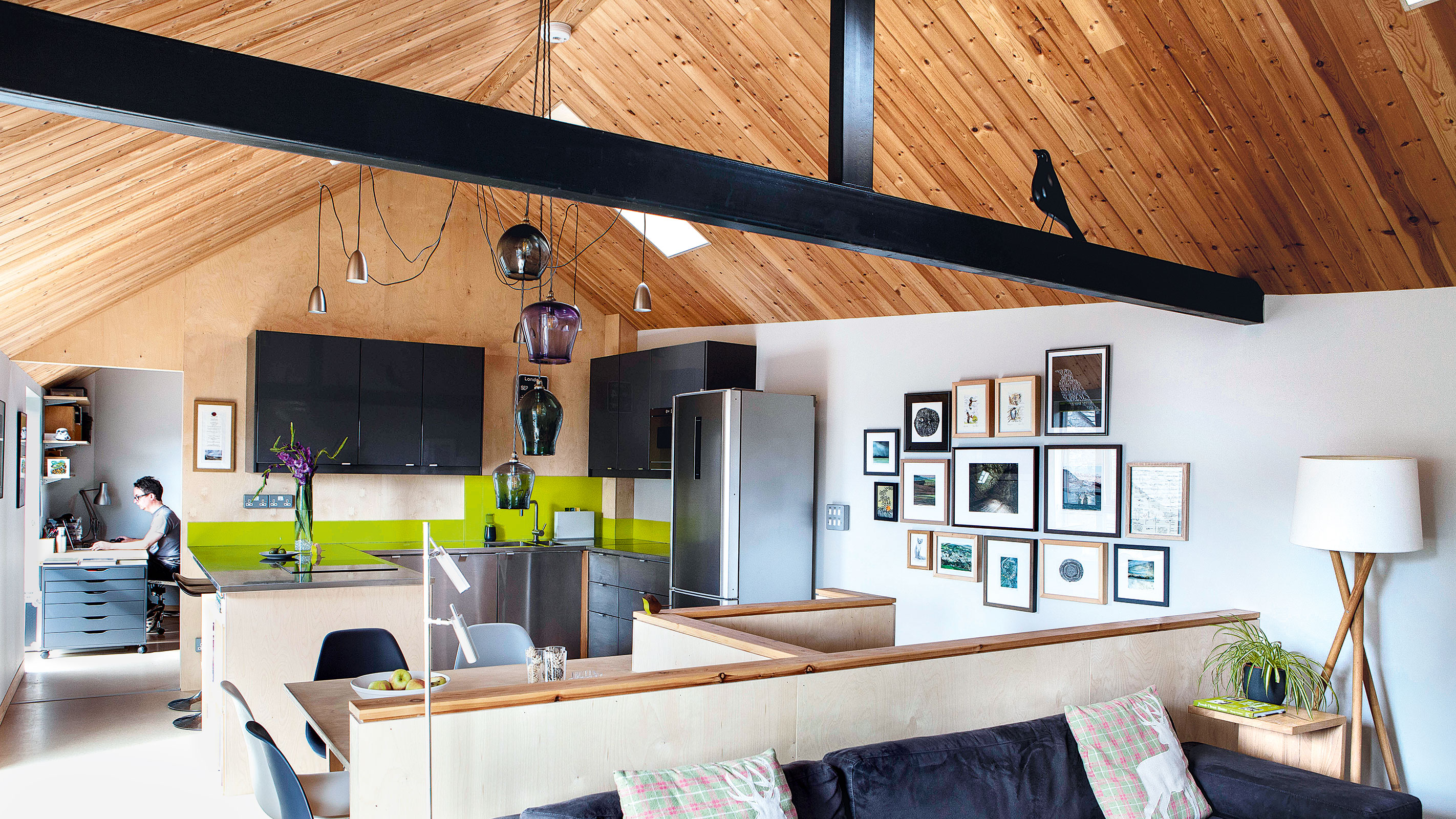
Raw, natural finishes are definitely the way to go if it is an industrial look you are aiming for — and timber and metal are particularly good choices, especially when it comes to finishing off vaulted ceilings in style.
In this self build, which was completed for just £160k, the birch-faced ply that has been used to clad the walls, sits beautifully against the pine ceiling cladding used on the vaulted ceiling and the black exposed A-frame.
8. Don't discount curved ceilings
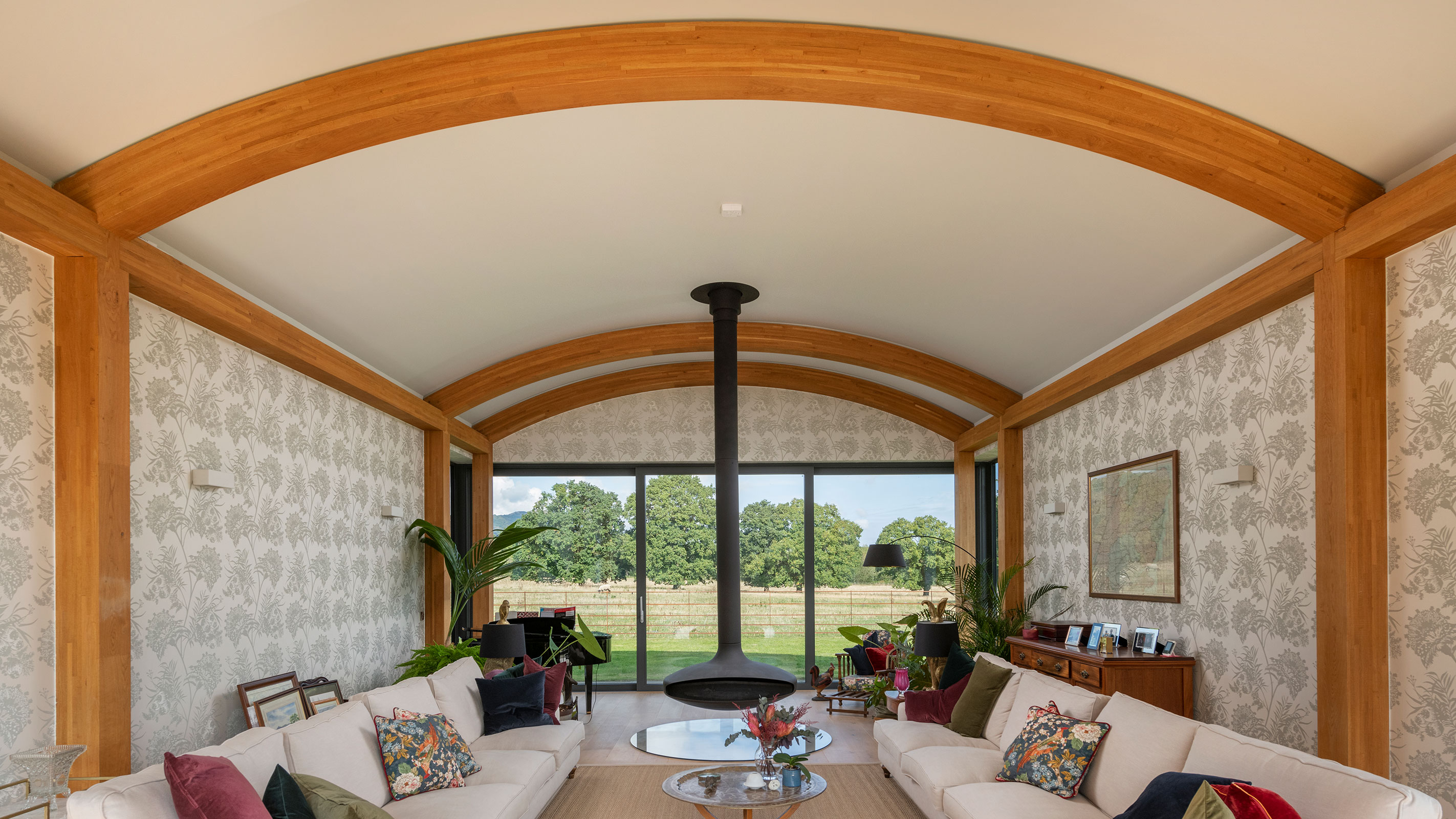
Curved ceilings, also known as barrel vault ceilings are, as the name suggests, shaped like the inside of a barrel and result in one long, continuous arch.
They look brilliant when used in open plan spaces and along hallways — they also work really well with both timber ceiling cladding as well as simple plaster finishes, as can be seen here.
The owners of this self build, designed by Roderick James Architects, were keen to recreate the look and feel of a Dutch barn with a curved roof.
9. Turn your entire ceiling into a focal point
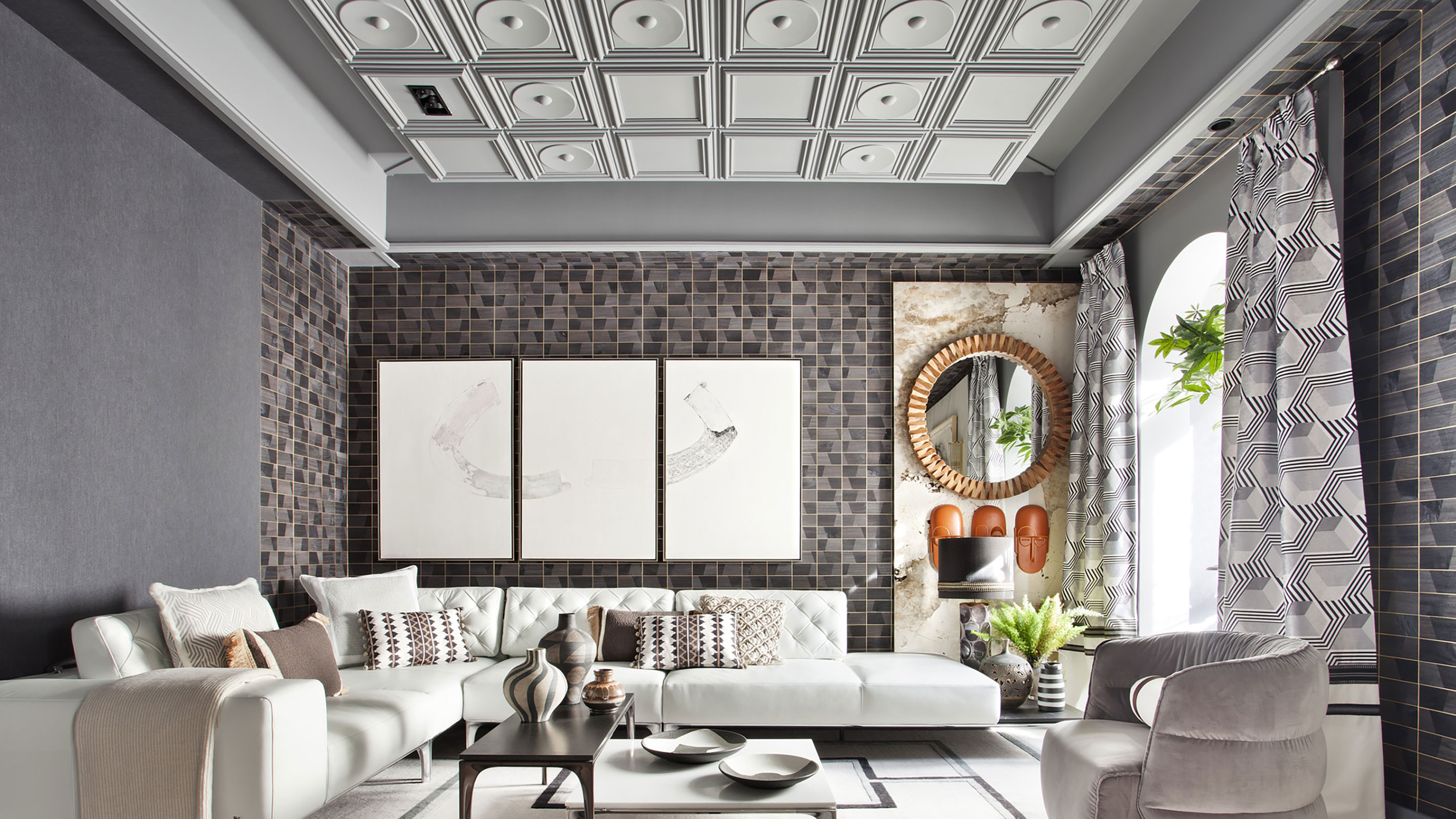
Ceilings do not have to be boring or neutral — just think of the period mouldings now so sought after by those renovating period properties.
Turn your ceiling into the focal point of the room by giving thought to how you could bring it to life in a way that will compliment the rest of the decor within your space.
Here, Orac Decor 3D Panels, from The Wood Veneer Hub, have been used on both the walls and the ceiling. Not only do they add interest and an optical illusion but they also make the most of a high ceiling, drawing the eye to the soaring proportions of a space. They can even be supplied pre-sprayed in a colour of your choice.
10. Take care when dealing with a low ceiling
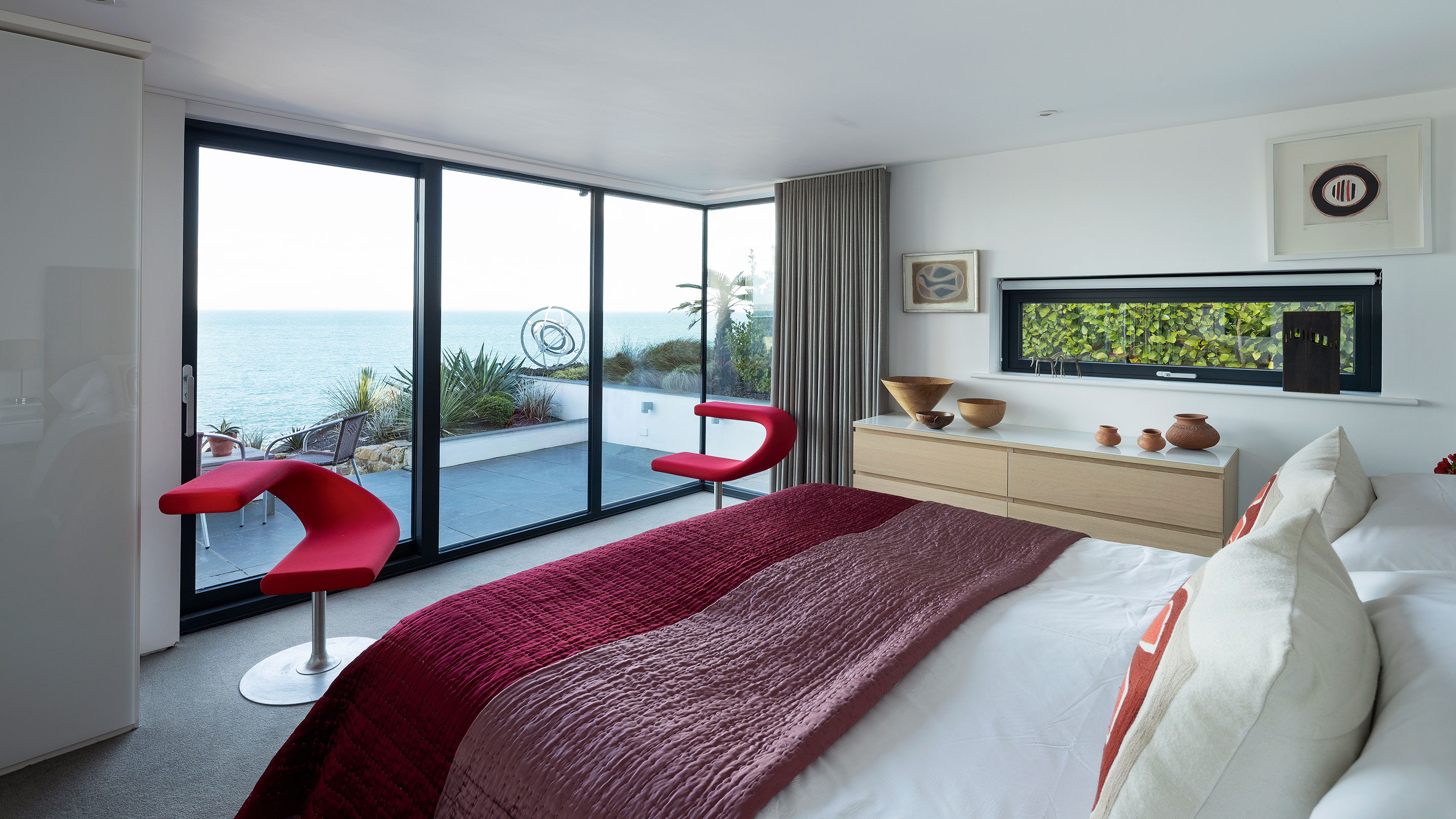
While there are plenty of ways of lighting low ceilings in a way that can make them appear higher or less oppressive, there are also other tricks to consider. It is important to remember that low ceilings are not always necessarily a bad thing — they can make a space feel cosy and warm and are perfect for snugs and in intimate dining areas.
However, if you have low ceilings and are wondering what type of windows to use within the space, take inspiration from this project. The owners have extended and renovated their coastal bungalow and were keen to make the most of the ocean views. In the bedroom, full-height sliding doors work brilliantly alongside the long, horizontal window that has been set midway down the wall.
11. Paint ceiling cladding for a coastal vibe
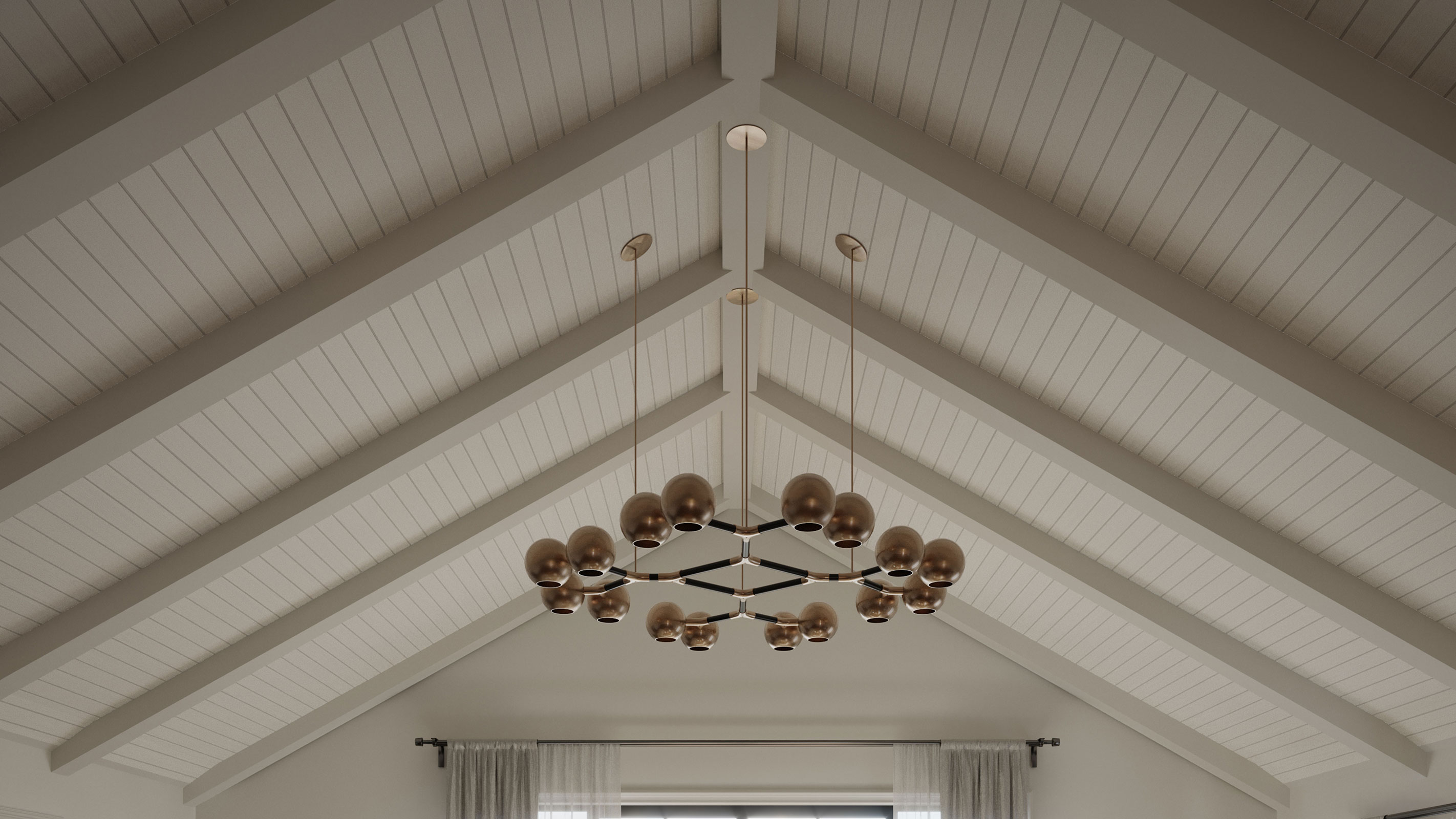
The fresh, coastal look is one coveted by many people, keen to inject a laid-back breezy feel into their homes. A great way to achieve this style is to use simple tongue-and-groove timber cladding on the ceiling and paint it a subtle, pale shade such as white, grey or a pastel sky blue.
Here, the vaulted ceiling has been painted a clean white shade, while the eye-catching Horus Suspension Lamp with its bold copper finish, from Brabbu, sits in pleasing contrast.
12. Put a new spin on a coffered ceiling
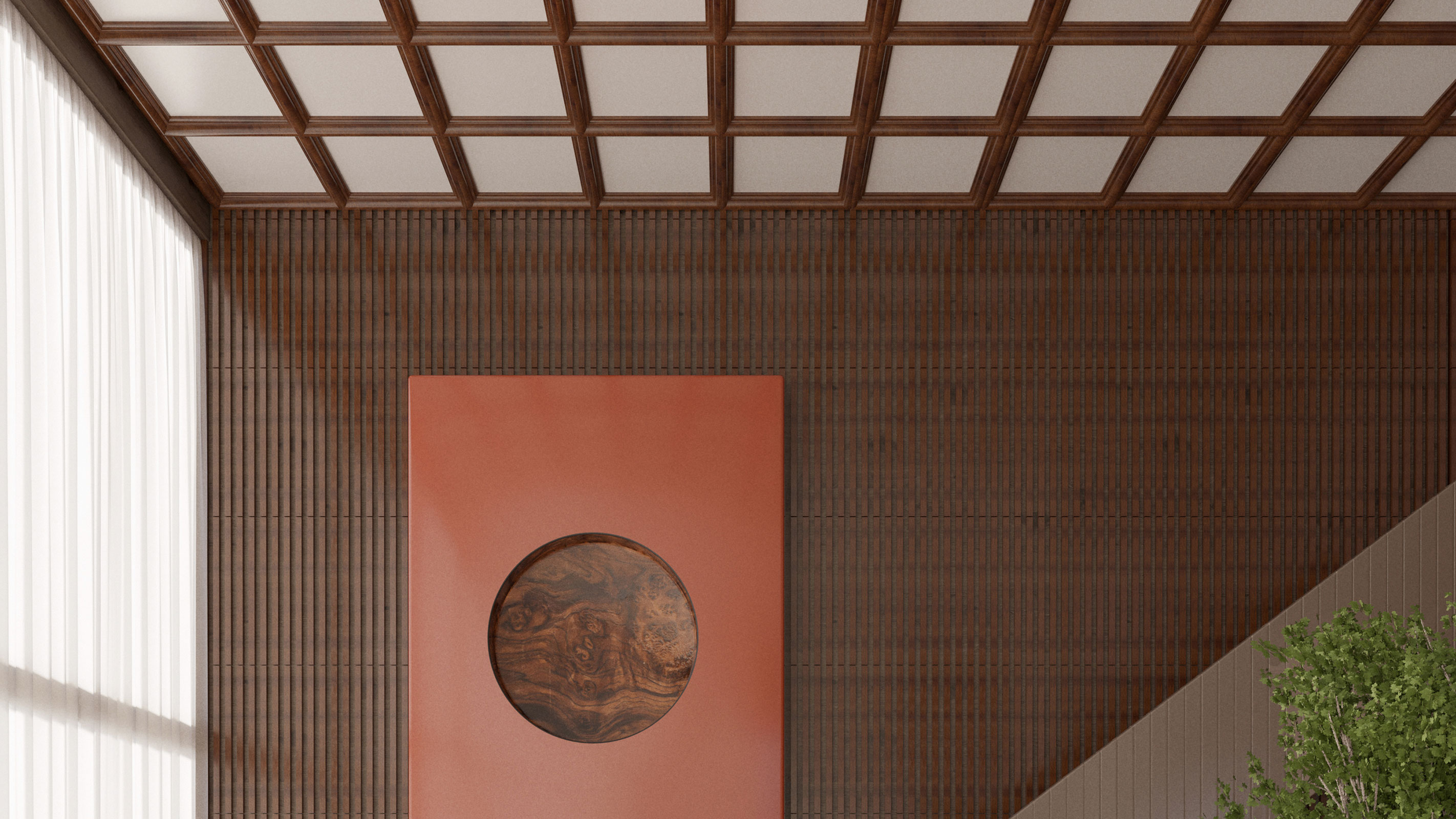
Perhaps one of the lesser-spotted ceiling types, coffered ceilings have an awful lot to offer. But just what is a coffered ceiling?
They are based on a classical design and are comprised of a series of grids formed by either recessed sections or by using stick on mouldings.
They are perfect for those after high ceiling ideas as opposed to those with rooms more squat in their proportions, where they can be a little overwhelming.
While this style of ceiling has traditional roots, a ceiling featuring the distinctive grid pattern can actually work very well in contemporary homes, especially when teamed with concealed LED lighting.
12. Turn your ceiling into a work of art
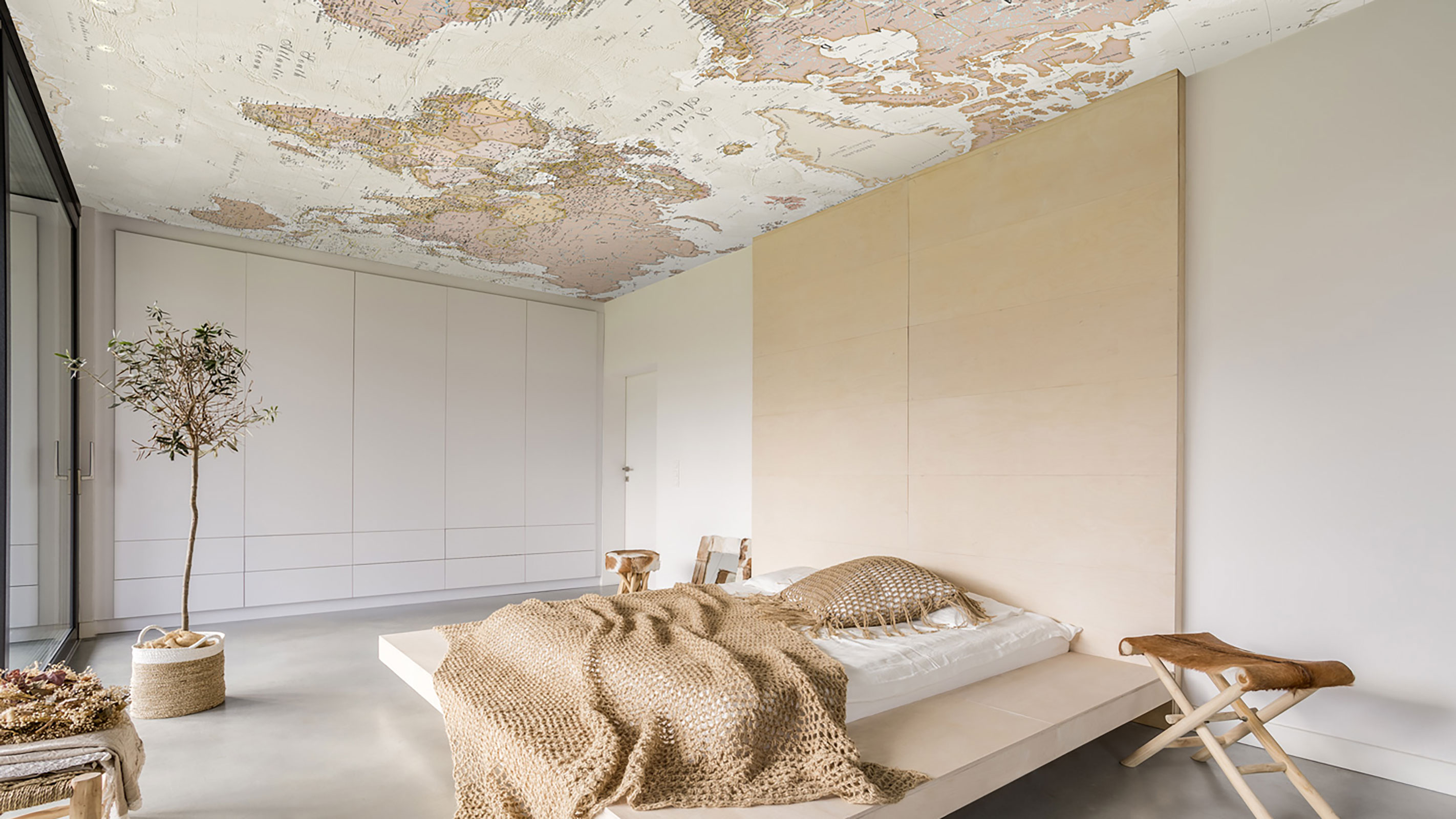
Turn your ceiling into a point of interest by using a feature wallpaper to cover it — wallpaper really doesn't have to be restricted to walls.
This is an idea that works really well in bedrooms, where the wallpaper can provide you with something lovely to look at when reclining in bed — much better than staring at a bare and boring ceiling.
Here, a made-to-measure 'Antique World Map' Mural by Lovell Johns, available from Wallsauce.com has been used, with its neutral tones complimenting the rest of the interior decor scheme.
13. Prevent a vaulted ceiling from dwarfing furniture
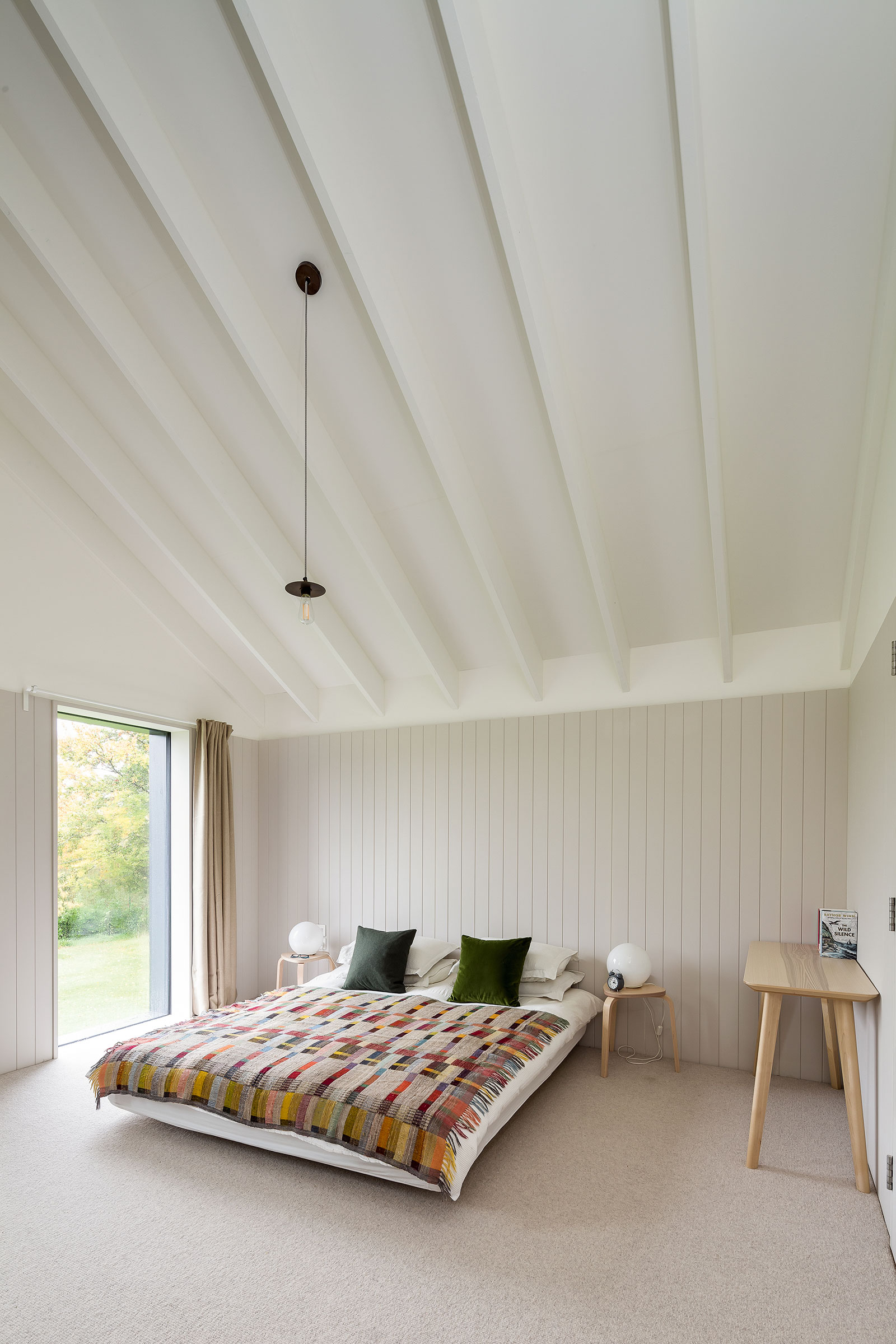
Vaulted ceilings are the perfect way to add drama and character to single and double-storey homes alike, however, they are not without their issues
Firstly, they can be more expensive to construct than standard ceilings. Then there is the fact that they can be hard to heat and to clean — plus you will need to think about how you will access any light fittings once the bulbs go pop.
Finally, vaulted ceilings can dwarf furniture a little, making things look out of proportion.
In this self build, architect Jake Edgley, of Edgley Design, installed wall panels at a height of 2.1m in order to bring the scale of the room down.
14. Mirror mouldings with light fittings
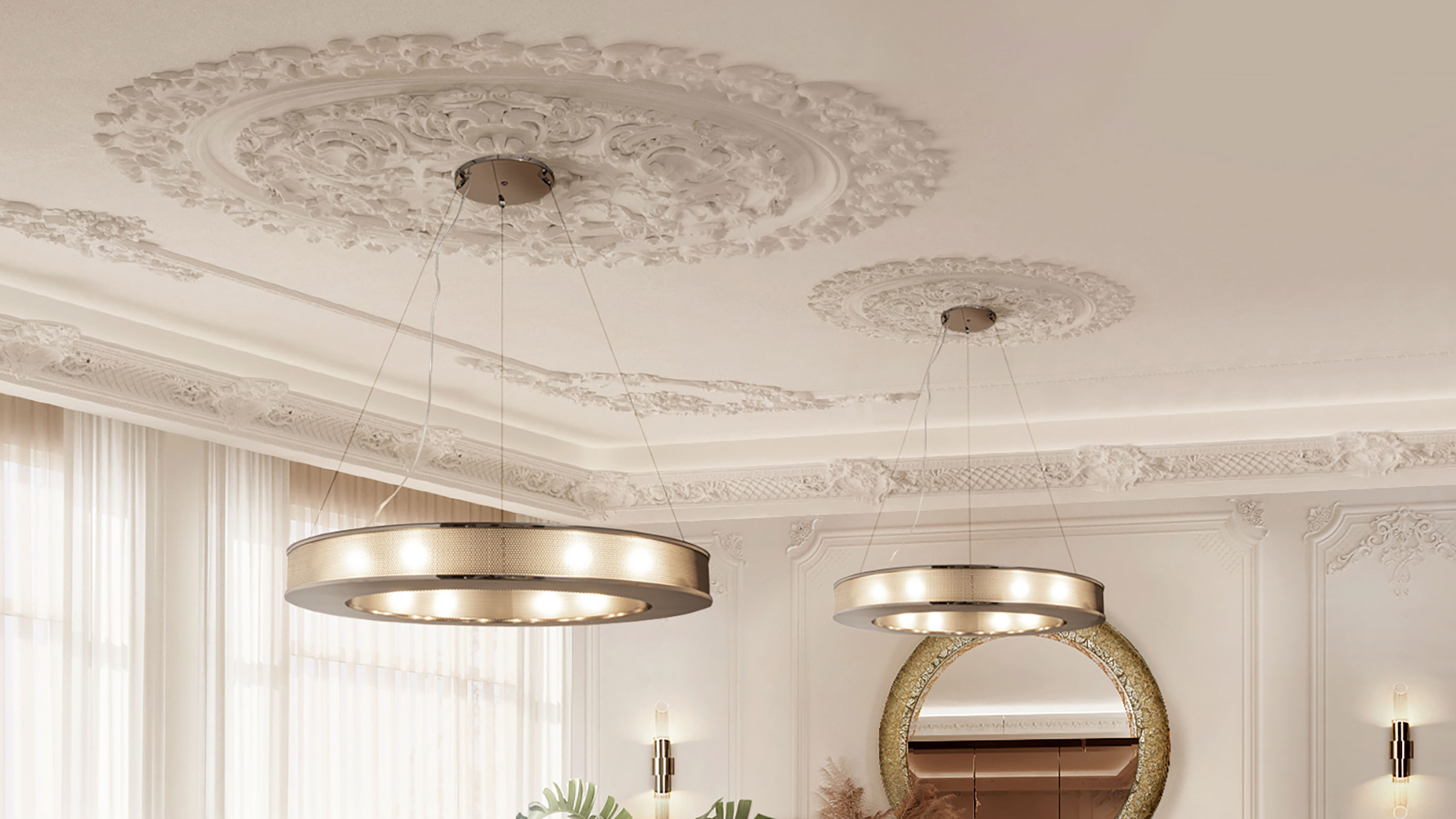
Original mouldings can be a thing of beauty and if you have been lucky enough to discover your home has some still in place then you will no doubt be keen to find ways to make the most of them.
One way to highlight ceiling mouldings is through your ceiling lighting ideas. Here, striking pendant lights – Marcus pendant lamps from Covet House – mirror the circular form of the ceiling roses, as does the wall mirror.
15. Really maximise a vaulted ceiling
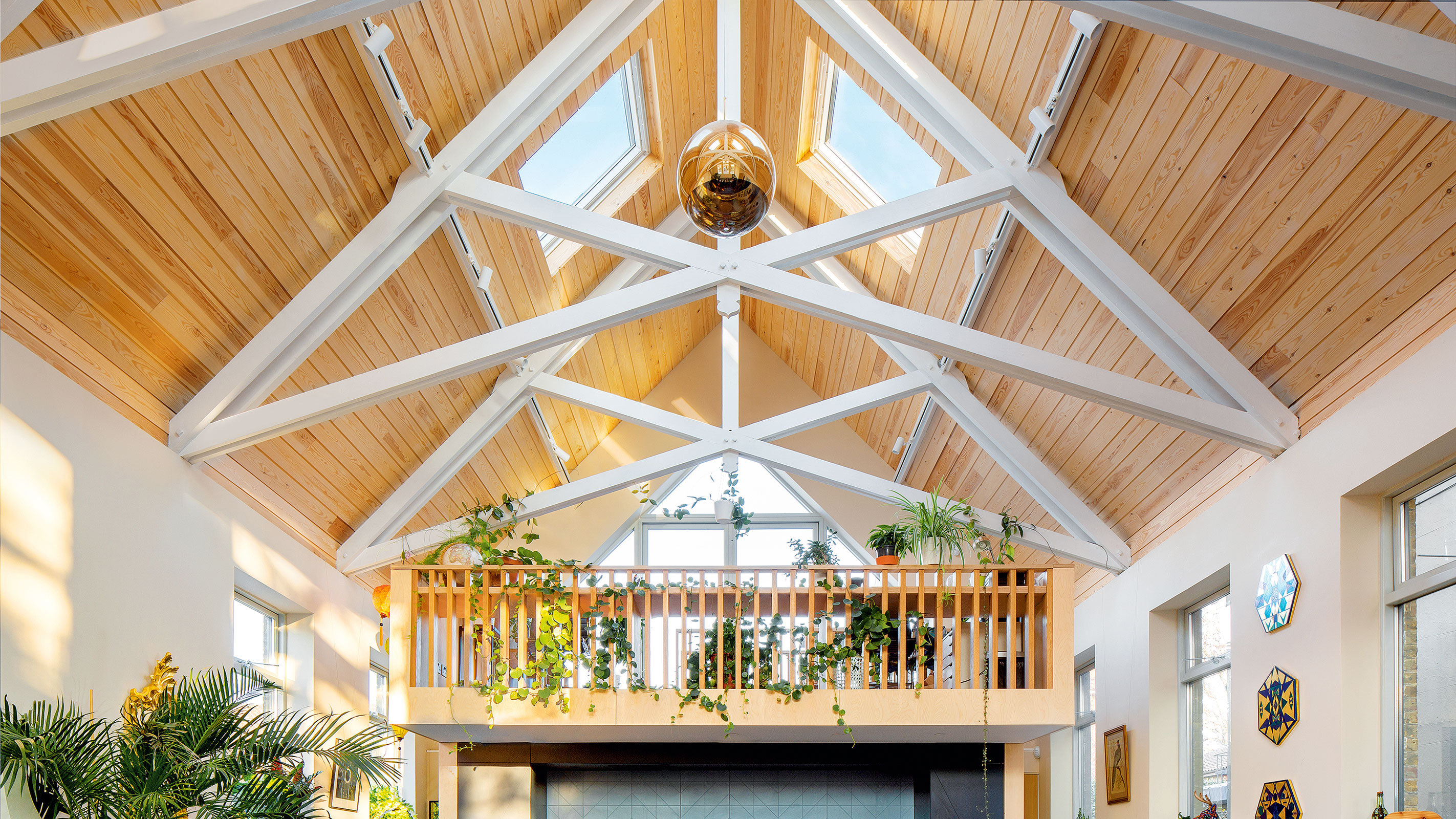
Vaulted ceilings are a beautiful feature in many styles of property but it can be hard to know how to make the most of them. While there are many lighting ideas for vaulted ceilings to consider, such as using oversized fittings to add even more drama, positioning spots to highlight beams and fitting wall washers to emphasise the proportions of the space, there are other tricks to think about too.
This converted Edwardian chapel, with its exposed timber trusses, has been fitted with a mezzanine level that ensures floor space is not sacrificed for soaring ceilings. The striking pendant lighting is from Tom Dixon.
16. Match wall and ceiling colour
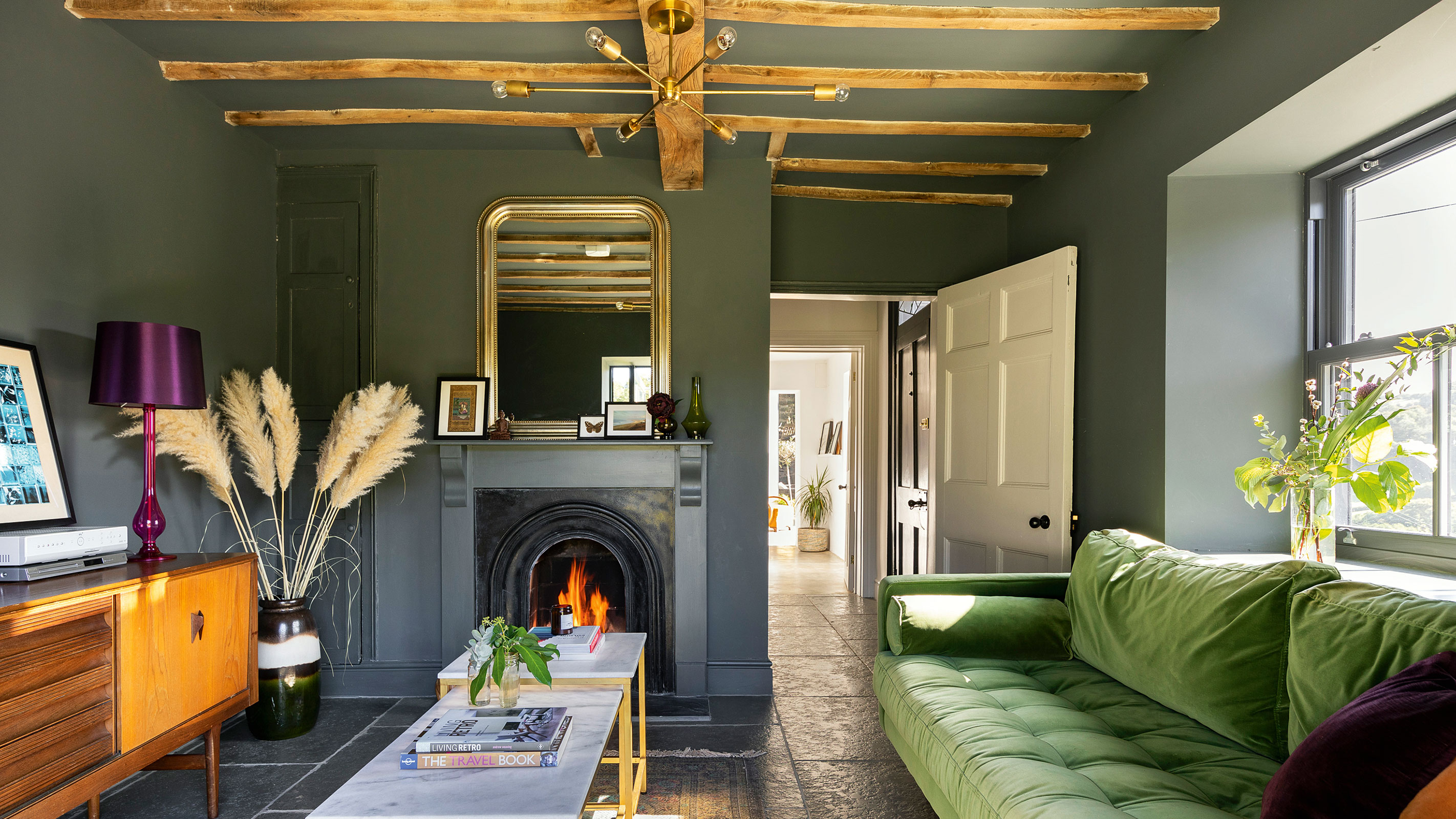
While convention says that the ceiling should be painted in a lighter shade than that used on the walls, the trend for 'colour drenching' has seen things change.
Painting the walls and ceilings in the same shade adds tonnes of drama, creates added depth and really pulls a space together — it can also help a small space appear bigger than it really is.
In this renovated farmhouse, the ceiling and walls are the same smokey blue grey, while the original timber beams have been left in their natural state — the effect is very striking.
17. Add instant character with a lattice ceiling design
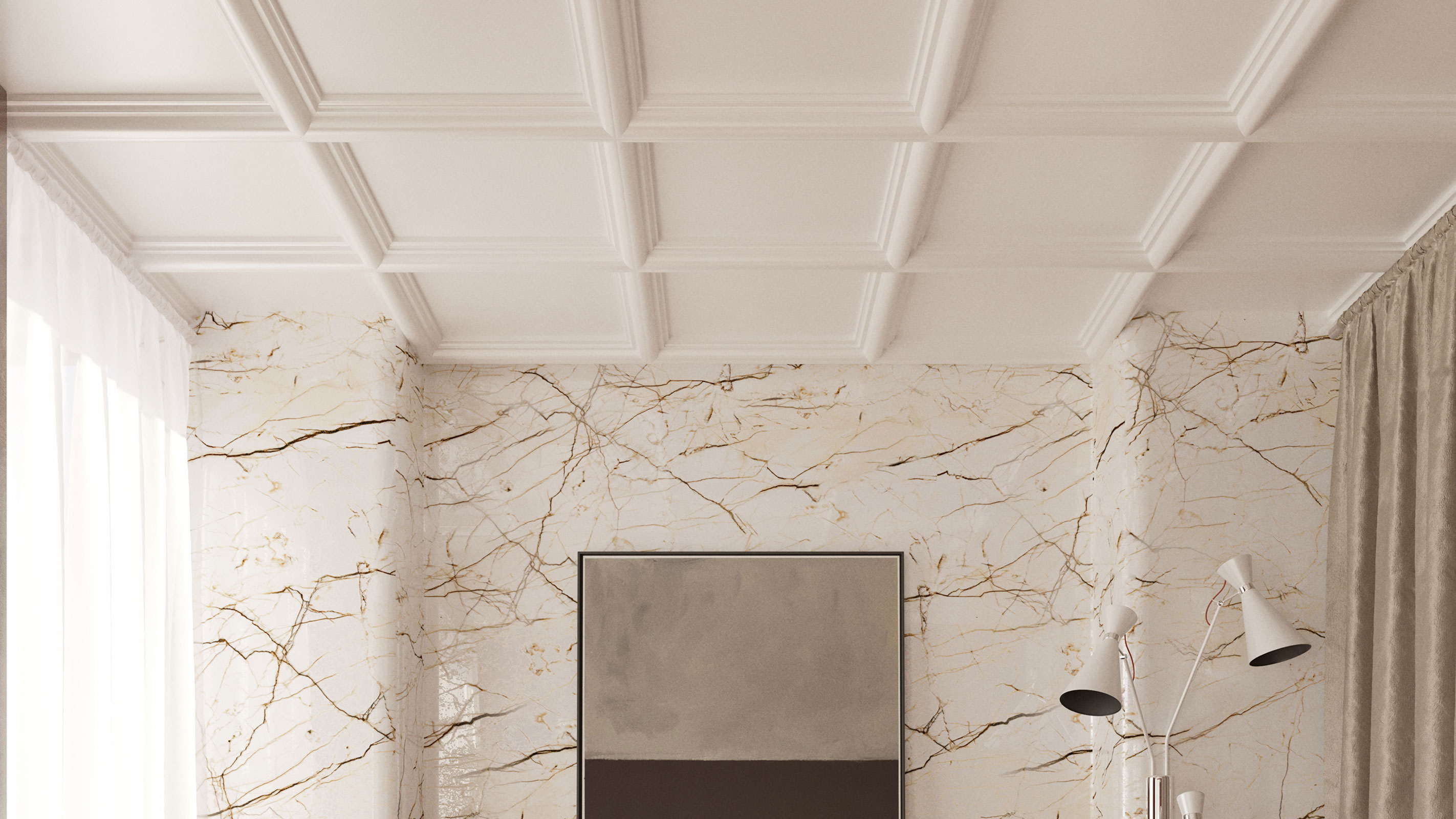
Even if it is neutral living room ideas you are after, you will probably be keen that the space won't feel bland or boring. There are, thankfully, lots of ways to ensure that a pared-back colour scheme can still feel full of character, warmth and interest — and one of them is through the way in which you treat the ceiling.
The success of this living room is down to the variations in texture and pattern that have been used throughout the space. The striking marble wall sits brilliantly alongside the lattice-pattern of the coffered ceiling, while varying the curtain fabrics adds further interest.
18. Make mouldings pop with a colour contrast
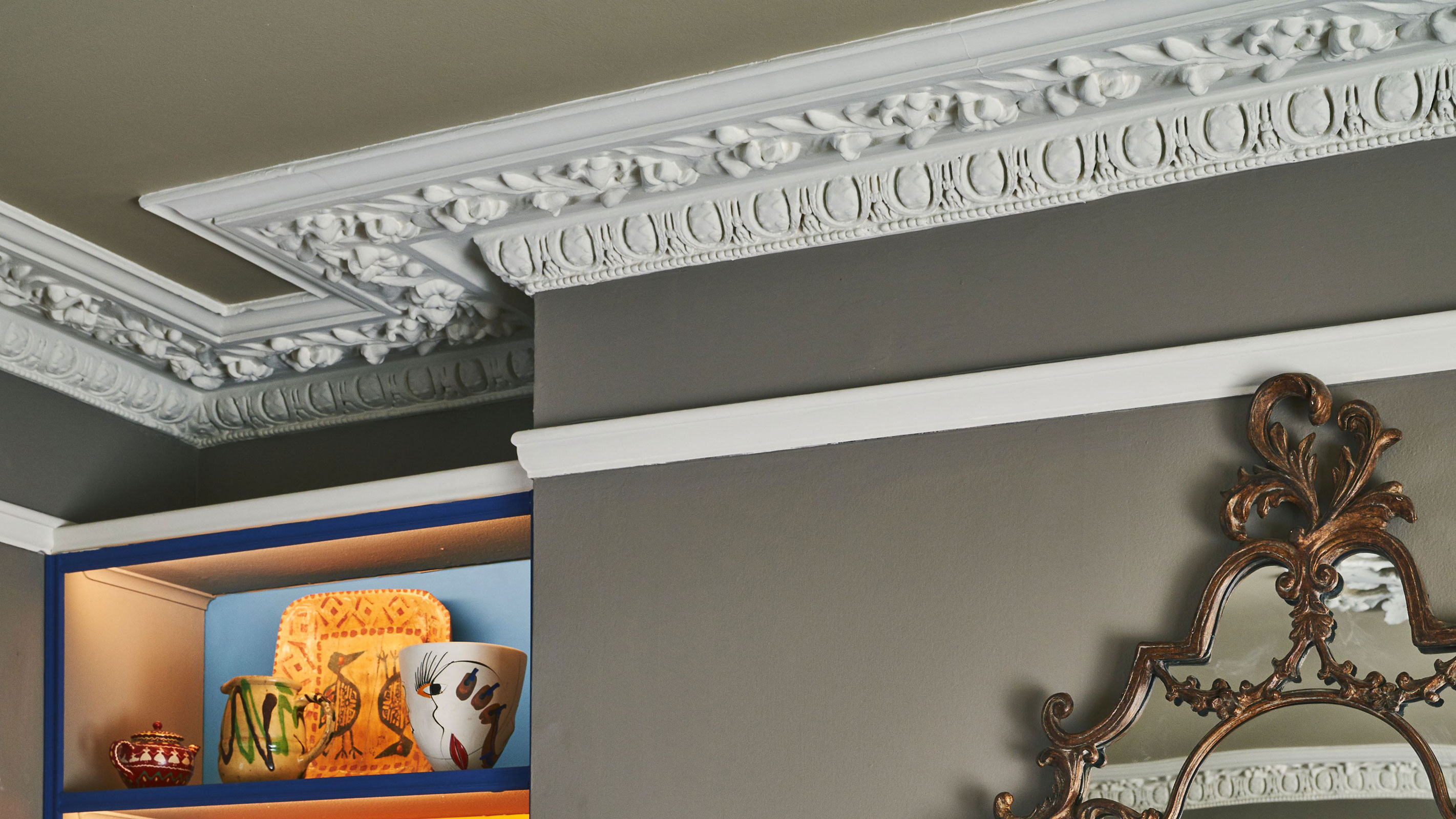
Using a range of shades over your walls, ceilings and mouldings is a great idea for a number of reasons. By picking a single shade, different from that used on the walls and ceiling, for your mouldings, you will be ensuring that they really stand out and can be fully appreciated. Bright white works well, as do bolder dark shades — both of which pick up on the more intricate details.
Here, paint by Annie Sloan has been used in various earthy shades, with the mouldings being given a fresh white finish.
19. Zone an open plan space with your ceiling
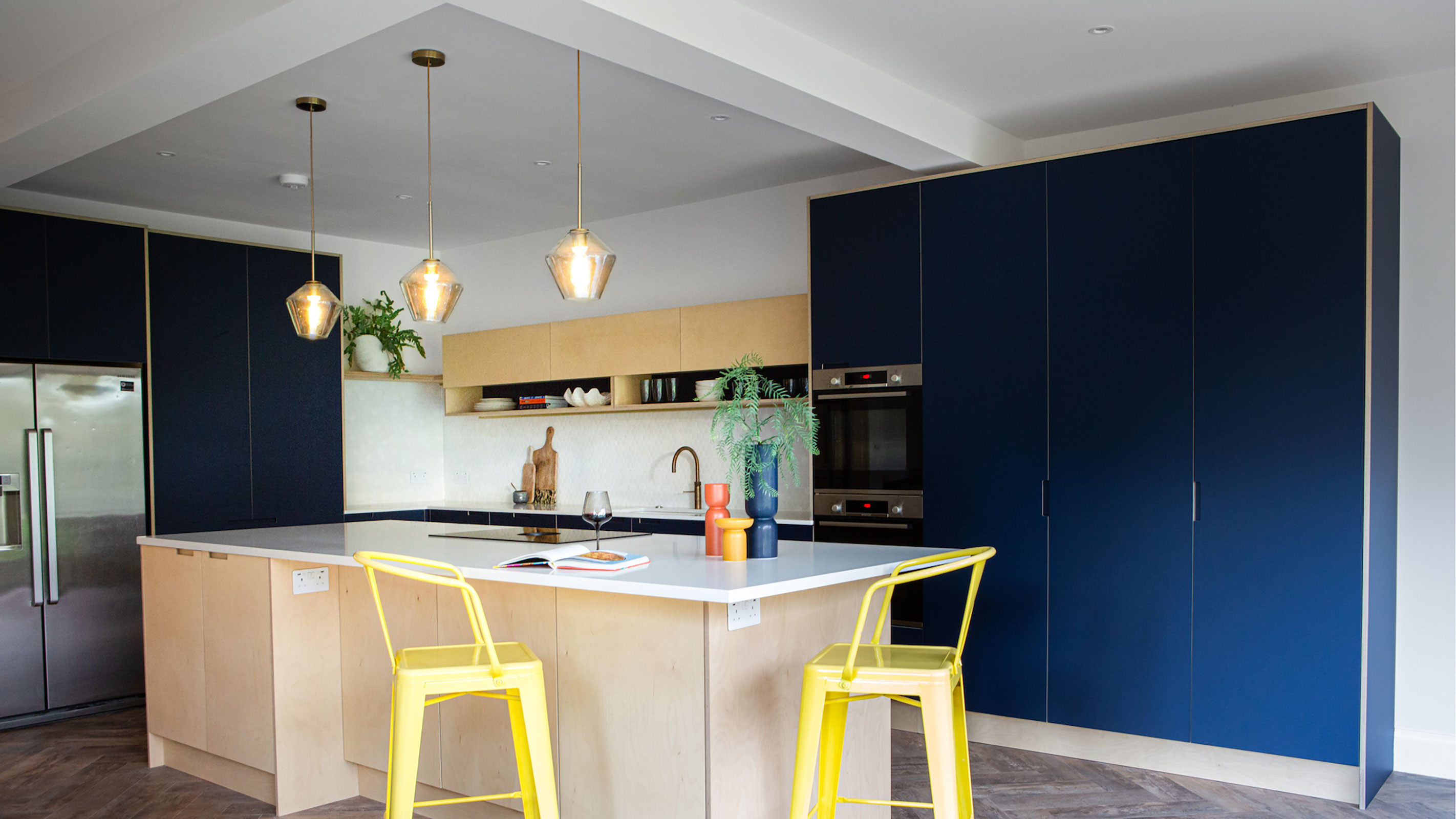
The popularity of open plan living is showing no signs of declining, but it is important to find ways to break these kind of spaces up visually in order to create various zones within the area.
Varying ceiling height is the perfect way to mark out different zones — use lower ceiling heights in the areas you want to feel warm and welcoming and reserve higher spots for sociable and functional spaces.
In this kitchen, from Wood Works Brighton, a lowered ceiling section directly above the island gives emphasis to the heart of the space.
20. Use a recessed ceiling to add character
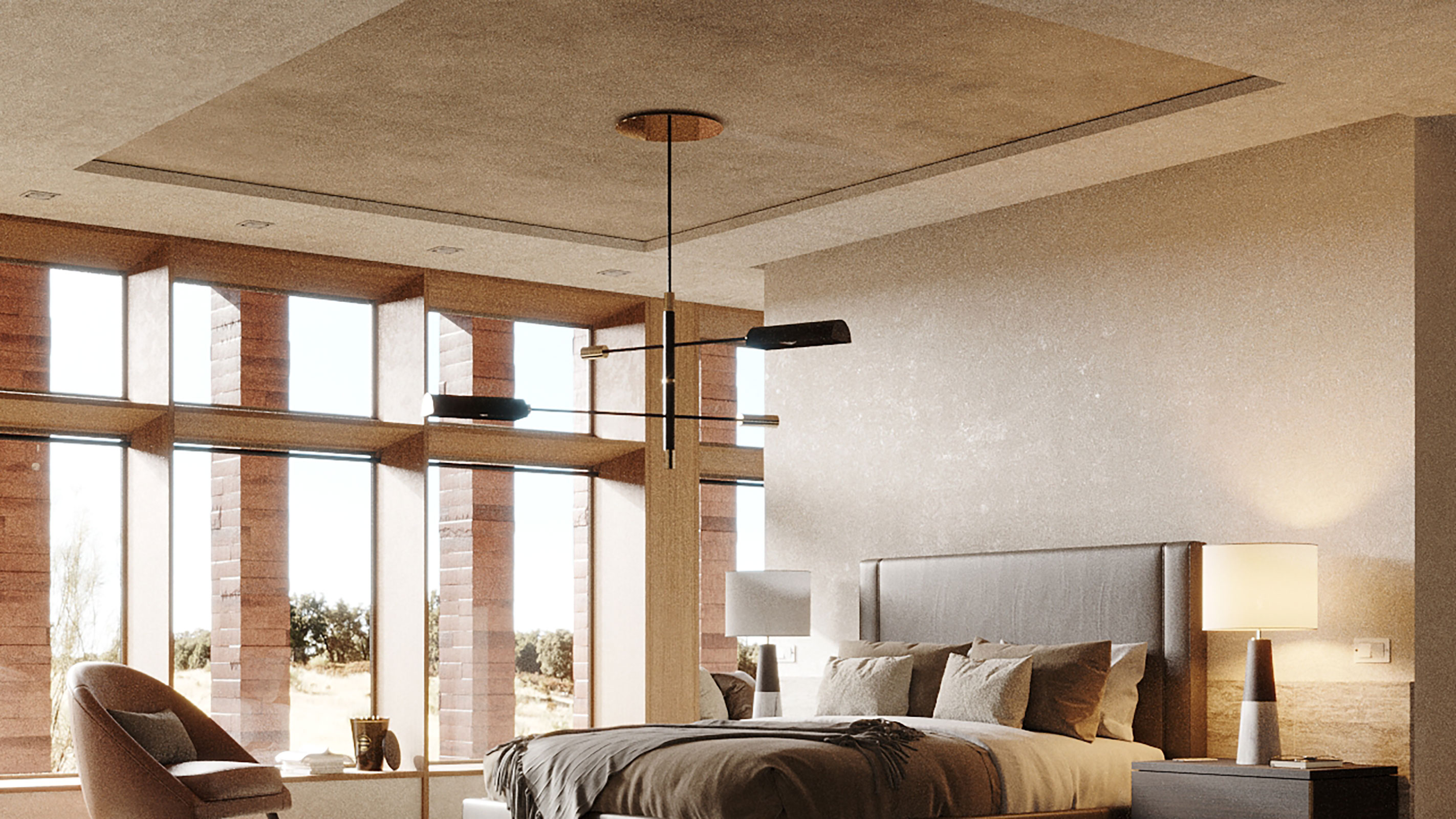
Perfect for those who want to make a statement with their ceiling, recessed ceilings – sometimes known as tray ceilings – feature a central section that is set at a higher level than the surrounding ceiling.
They are most commonly formed by constructing a suspended ceiling around the periphery of the room. Not only do they provide homeowners with the chance to fit concealed LED strip lights around the edge of the recessed section but they are also a great way to make a space feel cosier and more welcoming.
21. Drench your home in light with a glass ceiling
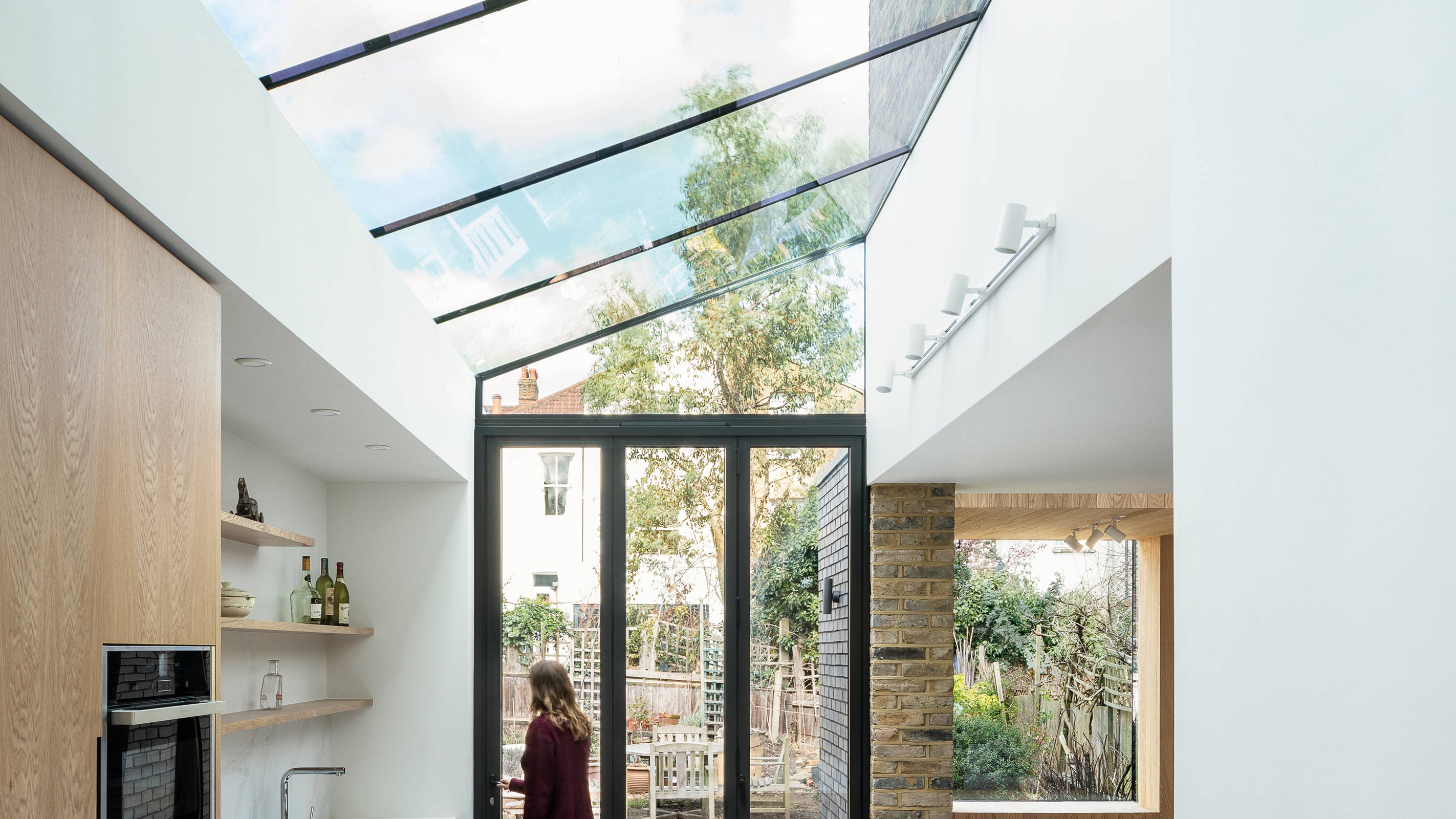
What is one of the best ways to introduce light from above? With a glass ceiling of course.
By introducing structural glazing into the design of your home, you will transform a standard room into a dazzling, bright, light-filled space. A glass ceiling is also the ideal solution where the use of conventional windows is restricted — perhaps in side return extensions such as this.
Structural glass roofs usually involve the use of structural support, such as frameless glass beams or slim steel supports. A cheaper and simpler way to bring in overhead light is to use a roof lantern or a bank of rooflights.
Get the Homebuilding & Renovating Newsletter
Bring your dream home to life with expert advice, how to guides and design inspiration. Sign up for our newsletter and get two free tickets to a Homebuilding & Renovating Show near you.
Natasha was Homebuilding & Renovating’s Associate Content Editor and was a member of the Homebuilding team for over two decades. In her role on Homebuilding & Renovating she imparted her knowledge on a wide range of renovation topics, from window condensation to renovating bathrooms, to removing walls and adding an extension. She continues to write for Homebuilding on these topics, and more. An experienced journalist and renovation expert, she also writes for a number of other homes titles, including Homes & Gardens and Ideal Homes. Over the years Natasha has renovated and carried out a side extension to a Victorian terrace. She is currently living in the rural Edwardian cottage she renovated and extended on a largely DIY basis, living on site for the duration of the project.

